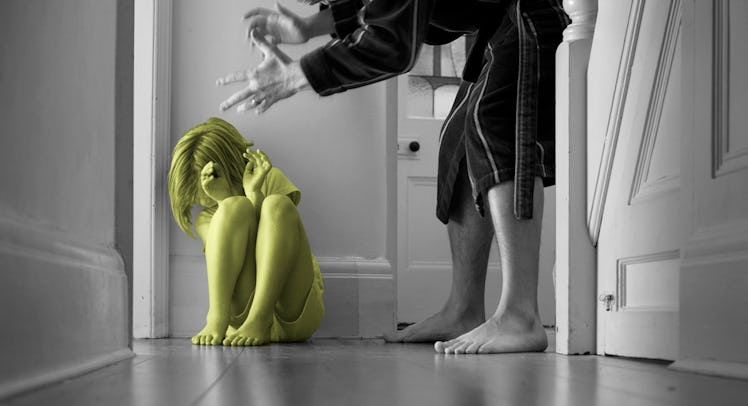What is the Difference Between Discipline and Abuse?
It's all about what transpires in the moment.

Abuse should never be considered discipline and good discipline should never be abusive. But in the heat of a disciplinary moment, particularly one fraught with stress, parents can quickly approach the border of abuse before they even realize it. The speed at which correcting a child can turn into damaging a child makes it hard to pump the breaks, and even harder to be self-aware enough to recognize the danger.
“If you can’t control yourself, you’re in jeopardy in being too angry or too verbal,” warns Dr. Michele Borba, author of No More Misbehavin’: 38 Difficult Behaviors and How to Stop Them. She notes that a simple warning sign that a parent might be straying into is abuse can be found simply in the way they enter into a disciplinary moment. “Discipline is It’s teachable, it’s calm, it’s dignified. Abuse is the opposite of those three.”
MORE: What is the Difference, Exactly, Between Discipline and Punishment?
One of the biggest problems for a parent when trying to discipline a child when they are angry and stressed, Borba notes, is that the emotion dampens an adults ability for perspective-taking. In those moments, clouded by anger, a parent can no longer see things from a child’s point of view. The result is that communication is immediately impossible, and with it, the ability to teach.
“If you’re calm, your child will be able to remain calm,” says Borba. “And that’s how children best receive the information you’re trying to give them anyway.”
RELATED: 11 Long-Term Benefits of Disciplining Your Kids
That’s why it’s so important to for parents to be able to step away. There’s a tremendous power in the act of stopping and taking a breath. It is essentially a parental time out. Borba recommends families develop a non-verbal sign that allows them to indicate it’s time to step away until things calm down a bit. “It doesn’t make any difference if it’s five seconds of ten seconds later. Take the breath and then be calm because your child is going to respond to you in a far better way,” she explains.
Of course some parents want to lean into their anger in hopes that it frightens a child. That’s because they have the misguided assumption that a scared child is a compliant child. “The research says fear works only in the here and now,” Borba notes. “The child responds because of the fear factor. Does it stop the behavior? No. In fact the biggest thing the fear does is reduce the child’s empathy.”
A kid that’s afraid of a parent is stressed. That stress makes it impossible for them to receive any of the information a parent is attempting to impart. What’s better, Borba nortes, is a relationship based on respect. Anger and fear are breeding grounds for abuse, which does not have to be as extreme as calling a child names or slapping them across the face.
“Abuse can be extremely subtle, but it’s always done with an extraordinarily negative intent that reduces a child’s dignity and respect,” says Borba. “In the end, it’s just bullying: intentional negative intent that’s repeated, done in a power imbalance where a child can’t hold their own.”
Read more of Fatherly’s stories on discipline, punishment, and behavior.